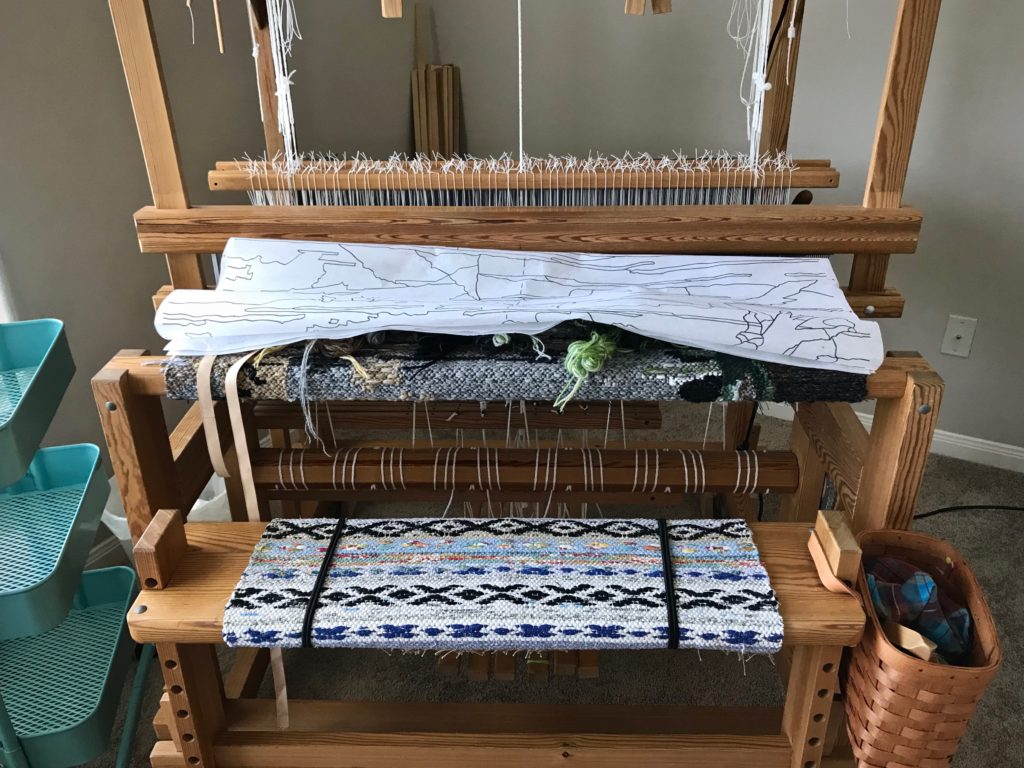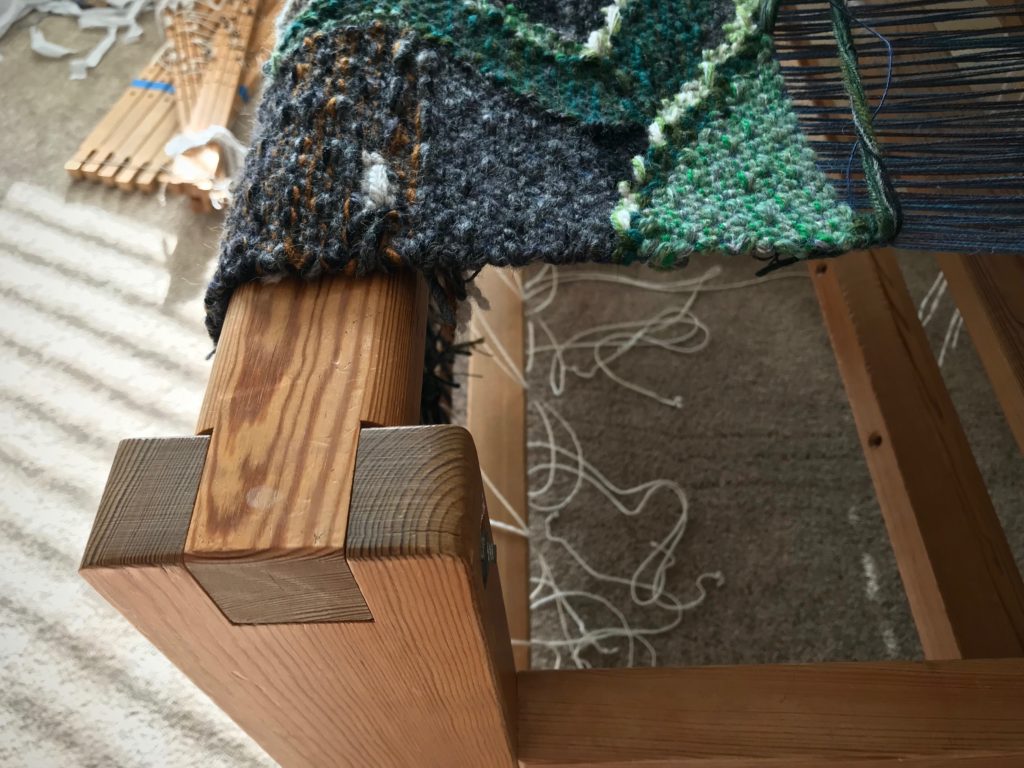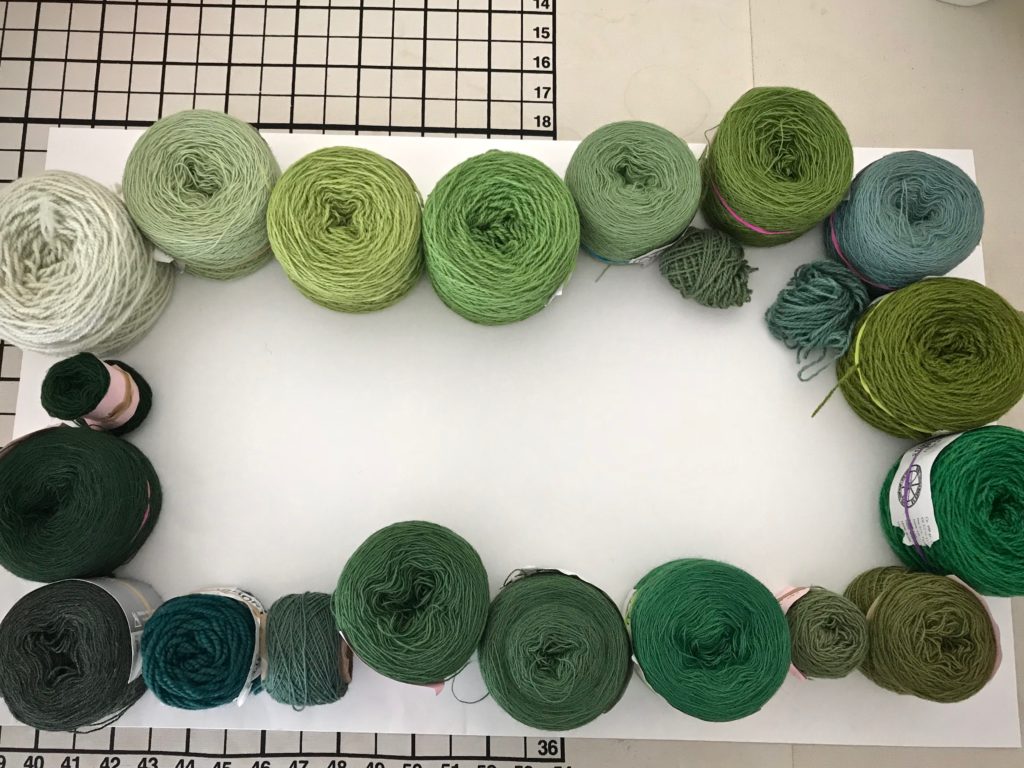There are no growth spurts with this lizard. He is certainly growing, but at a slow and steady rate. If I can keep this pace of about ten centimeters a week, I will be able to finish this tapestry before we move from the apartment—our temporary residence. The timeline is set. Will this slow-going, slow-growing lizard cross the finish line before I must dismantle the loom again? Time will tell. I have woven fifty centimeters. I have seventy-five centimeters to go.



Grow. We are woven together by loving each other. Each of us, like strands of wool yarn, with our own degree of hue, saturation, and value, not to mention twist and plies, are united with each other when we hold fast to Jesus Christ, the designer and weaver. His tapestry grows, not in spurts, but slow and steady, year after year, century after century. Always teaching us to love his way—sacrificially. And we know he has just enough time to finish the tapestry masterpiece that he has envisioned from the very beginning.
May you see slow and steady progress in things that matter.
Happy Weaving,
Karen






























